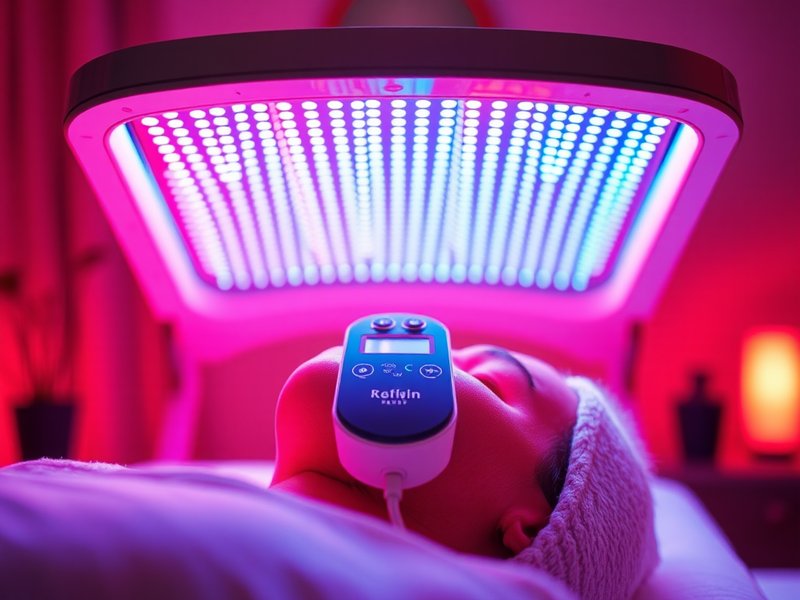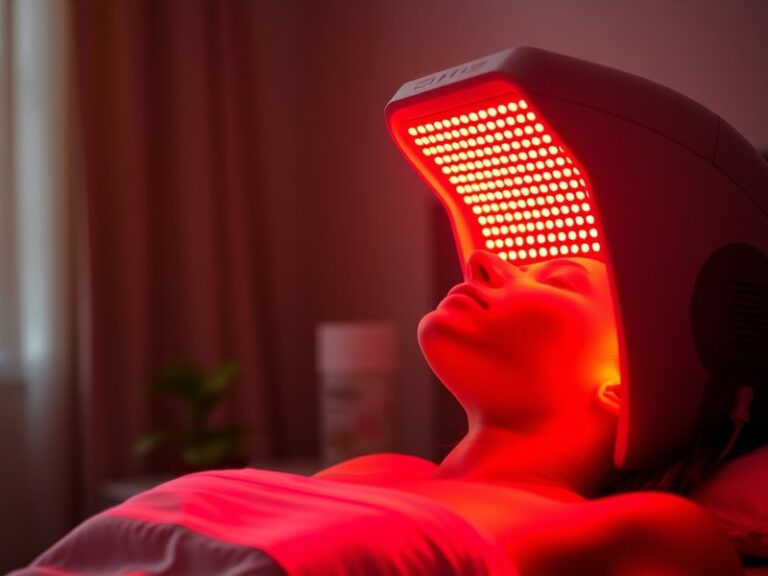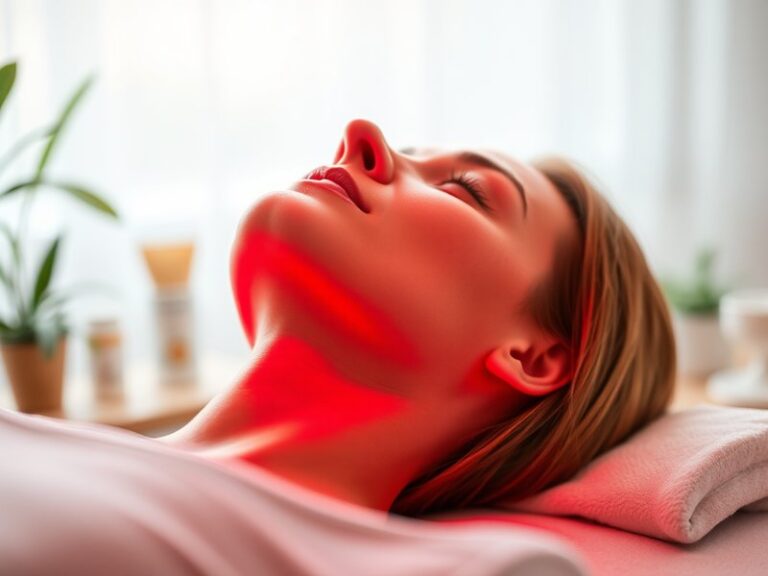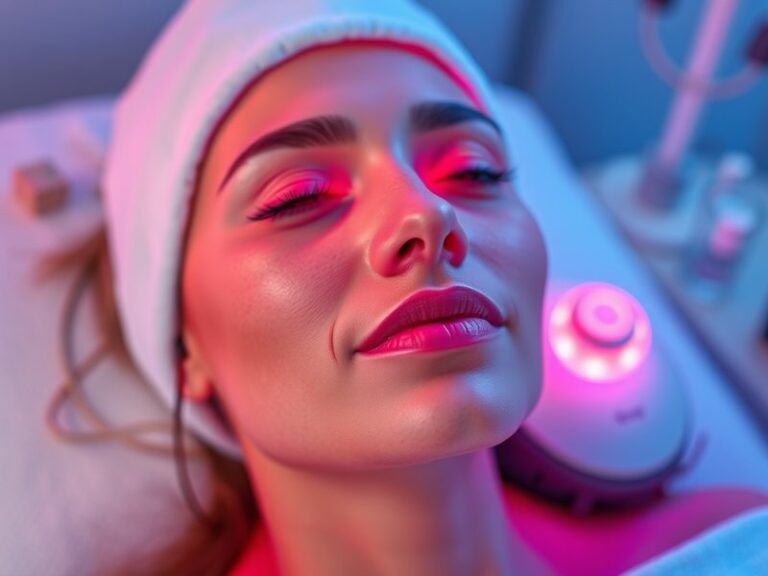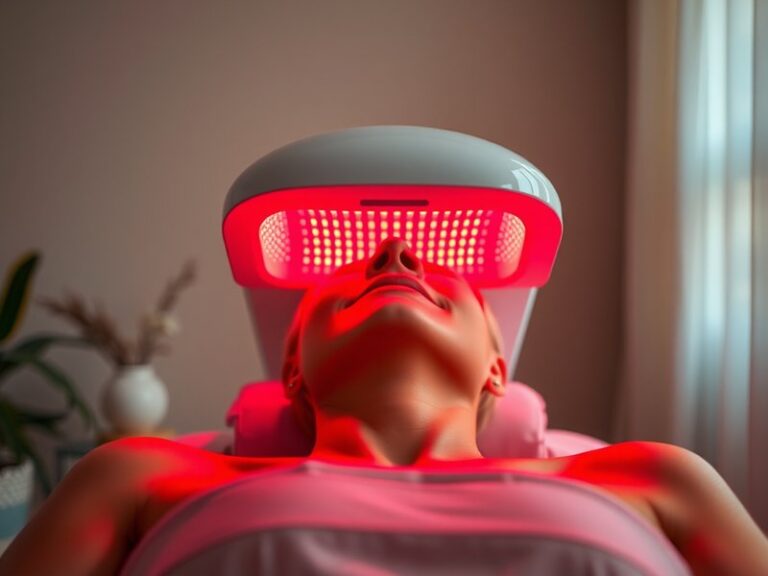Does Red Light Therapy Build Collagen?
Does Red Light Therapy Build Collagen?
Can red light therapy enhance your skin’s collagen production and give you a more youthful appearance?
This article explores the relationship between red light therapy and collagen production. We’ll discuss the science behind this treatment, its benefits, and what to consider before trying it yourself. By the end, you’ll have a comprehensive understanding of whether red light therapy can help you achieve your skincare goals.
Key Takeaways
- Red light therapy stimulates the production of collagen in the skin, leading to improved elasticity and reduced wrinkles.
- This non-invasive treatment offers benefits like faster wound healing and reduced inflammation.
- While generally safe, there are factors to consider before starting red light therapy, including skin type and treatment duration.
What is Red Light Therapy?
Red light therapy, also known as low-level laser therapy (LLLT) or photobiomodulation, involves using specific wavelengths of light, typically red or near-infrared, to penetrate the skin.
This therapy is believed to stimulate cellular processes that can help in tissue repair, reduce inflammation, and improve overall skin health. Historically utilized in medical settings for healing injuries and scars, it has gained popularity in the cosmetic industry for anti-aging benefits as well.
Mechanism of Action
Red light therapy works by stimulating the mitochondria in cells, which are responsible for energy production. Increased energy can enhance cell regeneration and processes like collagen synthesis. Collagen is a crucial protein that helps maintain the skin’s structure and elasticity, and its decline is often associated with aging.
What are the Benefits of Red Light Therapy?
Red light therapy offers various benefits for skin health and overall well-being. Below are some of the key advantages:
Stimulates Collagen Production
Studies have shown that red light therapy can dramatically increase collagen synthesis, leading to firmer, healthier skin. This makes it a popular choice for those looking to minimize fine lines and wrinkles.
Read our thoughts on “Does Red Light Therapy Reduce Fat?”
Improves Skin Tone and Texture
In addition to promoting collagen growth, red light therapy can enhance skin tone and improve texture by reducing redness and blemishes. Many users report smoother, more even skin after consistent treatments.
Reduces Inflammation and Pain
Red light therapy has anti-inflammatory properties, making it effective for reducing swelling and pain associated with various skin conditions, like acne and rosacea. This can contribute to improved healing and recovery times.
Enhances Wound Healing
The therapy is also recognized for its ability to speed up the healing of wounds and scars, thanks to its regenerative properties at the cellular level.
Discover Does Red Light Therapy Harm Skin?
Is it Possible to Build Collagen with Red Light Therapy?
Yes, research supports that red light therapy can effectively boost collagen production. However, results may vary depending on the skin type, age, and frequency of treatment.
What are the Advantages of Building Collagen through Red Light Therapy?
- Non-Invasive Treatment: Unlike surgical options, red light therapy is painless and non-invasive.
- Minimal Side Effects: Most users experience few side effects, often limited to mild skin sensitivity.
- Convenient Sessions: Each treatment session is relatively short, making it easy to fit into a busy schedule.
What are the Disadvantages of Building Collagen through Red Light Therapy?
- Variable Results: While many report positive effects, not everyone experiences significant changes in collagen levels.
- Time Commitment: To achieve optimal results, regular and consistent treatment over time is necessary.
- Cost: Depending on the provider and location, multiple sessions can become expensive.
What are the Things to Consider Before Starting Red Light Therapy?
Before diving into red light therapy for collagen building, it’s essential to keep several considerations in mind:
Consult a Skincare Professional
A consultation with a dermatologist can provide personalized advice on whether red light therapy is suitable for your skin type and goals.
Understand Your Skin Type
Different skin types may respond differently to red light therapy. Knowing your skin type can help tailor the treatment plan for optimal results.
Research Providers
Look for reputable clinics or devices and ensure that they follow safety guidelines and use FDA-approved equipment. Poor-quality devices can lead to subpar results or potential skin damage.
Evaluate Your Budget
Consider the financial implications, as multiple sessions may be needed to see significant changes. Ensure the costs fit within your budget before committing.
What are the Alternatives to Red Light Therapy?
If red light therapy isn’t the right fit, there are several alternative treatments to consider for enhancing collagen production:
Microneedling
This minimally invasive procedure involves creating tiny holes in the skin to stimulate collagen production. It can lead to improved texture and reduced signs of aging.
Chemical Peels
Chemical peels exfoliate the skin’s surface, encouraging new skin growth and stimulating collagen renewal. Various levels of peels are available, depending on the desired results.
Radiofrequency Treatments
Radiofrequency therapy uses heat to stimulate collagen production, tightening skin and reducing wrinkles without invasiveness. It’s another great option for those seeking skin rejuvenation.
Platelet-Rich Plasma (PRP) Therapy
Often referred to as a “vampire facelift,” this procedure involves drawing a small amount of your blood, processing it to concentrate the platelets, and then injecting it back into the skin to promote healing and collagen production.
Conclusion: Is it Recommended to Try Red Light Therapy for Collagen Production?
Red light therapy presents a promising, non-invasive option for those looking to enhance collagen production and improve skin quality. With a range of benefits and relatively few drawbacks, it’s worth considering as part of a broader skincare routine. However, individual results can vary, and professional consultation is recommended to determine its suitability for your skin type and goals.
Frequently Asked Questions
How often should I undergo red light therapy?
The frequency of treatment can vary based on individual needs. Many recommendations suggest 2-3 sessions per week for optimal results, but consulting a professional can provide a personalized plan.
Are there any side effects of red light therapy?
Most users experience few side effects, typically limited to mild skin redness or sensitivity. However, it’s essential to follow the provider’s guidelines to minimize risks.
How long does it take to see results?
Visible results can vary, but many users report improvements in skin texture and tone within 4-6 weeks of consistent treatment.
Is red light therapy safe for all skin types?
Generally, red light therapy is considered safe for all skin types. However, it’s best to consult with a dermatologist if you have specific skin conditions or concerns.
Can I perform red light therapy at home?
Yes, there are home-use devices available. However, effectiveness can vary, so it’s crucial to research products and follow usage instructions carefully to achieve desired outcomes.
